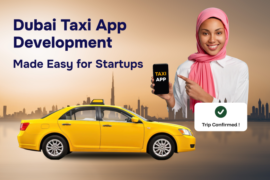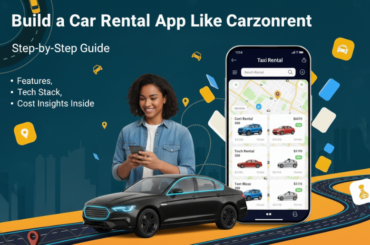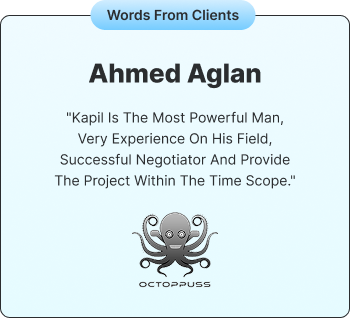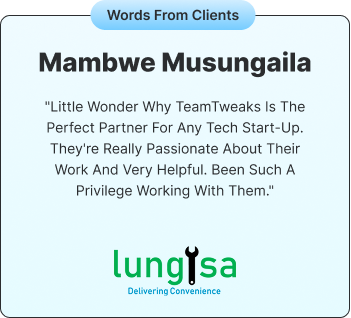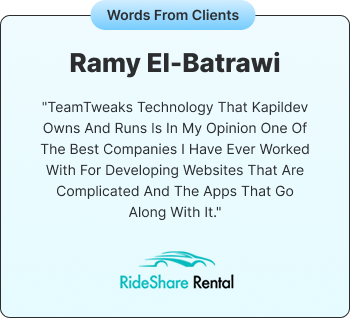If you’re trying to grow your business online, it’s easy to feel confused about where to start. SEO vs PPC are two of the most popular tools in online marketing. SEO helps build your online presence naturally, while PPC offers a shortcut to visibility at a cost.
Choosing the right strategy isn’t always simple. Do you want quick leads or long-term brand trust? Can you afford a steady ad budget, or do you prefer lasting traffic with less spending later? We’ll walk you through how each method works and when to use one, both, or a mix of the two for the best outcome.
Understanding SEO vs PPC
Organic SEO vs PPC – A Visual Comparison
As businesses continue to invest in digital marketing into 2025, one big question remains: should you focus more on SEO vs PPC?
Here’s a clear breakdown based on updated industry benchmarks.
Website Traffic Contribution
- Organic SEO contributes 53% of total web traffic.
- PPC brings in only 15%.
Organic SEO remains the best way to get steady and growing traffic to your website.
Click-Through Rate (CTR)
- SEO listings enjoy a 77.2% CTR.
- PPC ads lag behind at just 3.17%.
In 2025, users still trust organic results more than paid ads, making SEO the leader in engagement.
Revenue Impact
- SEO drives 53% of total revenue for businesses.
- PPC contributes just 23%.
SEO not only brings more visitors, it also converts better over time, delivering a stronger return on investment.
What is SEO?
SEO stands for Search Engine Optimization. It’s the process of improving your website so that it shows up in search engine results (like Google) without paying for ads. When people search for something on Google, they usually click on the first few results. SEO helps you get to those top positions.
SEO helps search engines understand your content better. It also makes your website easier to use for visitors. Strong SEO services makes it easier for people to discover your site and encourages them to stay longer. To succeed in SEO, you need clear content, fast loading pages, the right keywords, and a strong technical setup.
How SEO Works

SEO has three main areas:
- On-Page SEO: This includes optimizing your content, using keywords, writing meta titles and descriptions, improving internal links, and using proper headings. For example, a blog post about “how to bake a cake” should include that phrase naturally throughout the article.
- Off-Page SEO: This refers to actions taken outside your website, like getting other sites to link to you. TBacklinks signal to search engines that your site is reliable, while social media shares and online mentions further enhance your credibility.
- Technical SEO: This includes improving website speed, mobile-friendliness, fixing broken links, using structured data, and ensuring your site is secure (HTTPS). Technical issues can prevent your site from ranking well.
Benefits of SEO
- Cost-Effective: You don’t pay for clicks. Once your site ranks, the traffic it receives comes at no cost.
- Sustained Impact: SEO strategies implemented now can drive traffic for months or even years to come.
- Establishes Trust: People usually trust search results that appear naturally more than paid ads.
- Higher Click-Through Rates: SEO usually gets more clicks than PPC.
- Better User Experience: SEO helps organize your website so visitors can easily find what they’re looking for.
Challenges of SEO
- Takes Time: Results usually take 3 to 6 months.
- Ongoing Work: SEO is not a one-time task. You need to keep updating content and fixing issues.
- Changing Algorithms: Google often changes how it ranks websites.
- Harder in Competitive Industries: If many SEO companies are targeting the same keywords, it can be tough to rank.
Example:
If you own a bakery in New York, SEO can help your website show up when someone types “best bakery in New York” into Google.
What is PPC?
PPC stands for Pay-Per-Click. It’s a form of paid advertising in which you’re charged every time a user clicks on your ad. These ads appear at the top or bottom of search engine results pages, on websites, or social media platforms like Facebook and Instagram.
With PPC, you can quickly attract attention to your website. Platforms such as Google Ads, Facebook Ads, and Bing Ads provide PPC services, allowing you to target a specific audience based on their location, interests, or online behavior.
PPC also allows A/B testing of ads and landing pages, allowing for greater control and optimization over time.
How PPC Works

- Ad Creation: You write short ads with headlines, descriptions, and links.
- Keyword Targeting: You choose which keywords you want your ads to appear for.
- Bidding: You choose the amount you’re ready to pay each time someone clicks on your ad.
- Placement: Search engines or platforms like Google Ads choose which ads to show based on bid and ad quality.
- Cost Structure: You’re charged only when someone clicks on your ad.
Benefits of PPC
- Fast Results: Ads can start driving traffic immediately.
- Precise Targeting: You can show ads based on location, device, age, interests, etc.
- Budget Control: Set daily, weekly, or monthly budgets.
- Trackable Performance: You can measure clicks, conversions, and ROI easily.
- Great for Testing: Use PPC to test new offers, products, or messages quickly.
Challenges of PPC
- Can Be Costly: Highly searched keywords may be very expensive to target.
- Immediate Impact: When you stop paying, your ads will no longer appear.
- Click Fraud: Sometimes bots or competitors click your ads without real interest.
- Steep Learning Curve: Running PPC campaigns successfully demands experience and continuous optimization.
Example:
If you run a shoe store and use Google Ads, your ad may show when someone searches for “buy running shoes online.”
SEO vs PPC – Detailed Comparison Table
| Feature / Factor | SEO | PPC |
|---|---|---|
| Traffic Type | Organic (free clicks) | Paid (you pay per click) |
| Cost | Free clicks, but investment in time/content | Pay per click; costs vary by keyword |
| Time to Results | Slow (can take months) | Fast (instant traffic when ads run) |
| Long-Term Value | High (content keeps working over time) | Stops when you stop paying |
| Click-Through Rate (CTR) | Often higher (people trust organic results) | Lower than organic, but visible at the top |
| Brand Trust | Builds trust with consistent visibility | Less trusted than organic by some users |
| Control Over Placement | Limited control over ranking positions | Full control over where and when ads show |
| Ideal For | Long-term growth, content-rich sites | Quick sales, product launches, time-sensitive campaigns |
| Learning Curve | Moderate to high (requires SEO knowledge) | Easy to start, but optimizing can be complex |
| Maintenance | Ongoing updates and monitoring | Requires constant monitoring and budgeting |
| Analytics | Free tools like Google Search Console | Built-in reporting tools from ad platforms |
Pros and Cons of SEO
Pros of SEO
- Cost-Effective: Once your website ranks well, you don’t pay for each visitor.
- Long-Term Benefits: Effective SEO can attract visitors to your site for a long time, even months or years.
- Builds Trust: People often trust organic search results more than ads.
- Better Click-Through Rates: Users are more likely to click on organic results than paid ads.
Cons of SEO
- Takes Time: You may need to wait a few months to see big improvements from SEO.
- Requires Ongoing Effort: You need to keep updating your content and strategies.
- Algorithm Changes: Search engines like Google often change how they rank websites, which can affect your rankings.
Pros and Cons of PPC
Pros of PPC
- Immediate Results: Your ads can start bringing in traffic as soon as they go live.
- Targeted Advertising: You can choose who sees your ads based on location, age, interests, and more.
- Flexible Budget: You can control how much you spend daily or monthly.
- Easy to Measure: You can track how many people see and click on your ads, and how many convert into customers.
Cons of PPC
- Costly: Popular keywords can be expensive, and costs can add up quickly.
- Temporary: Once you stop paying, your ads disappear, and so does the traffic.
- Click Fraud: Sometimes, competitors or bots may click on your ads, costing you money without real customers.
When Should You Choose SEO?
SEO is a smart choice when:
- You want long-term growth
- Your budget is limited
- Want to build brand trust and authority
- You can wait a few months to see results
- You plan to be in business for years
Examples of SEO Use Cases
- Blogs and content websites
- Local businesses (like dentists or cafes)
- eCommerce stores with many products
- Companies that want to build organic traffic
When Should You Choose PPC?
PPC is the best choice when:
- You need quick results
- You’re launching a new product or service
- You’re running a limited-time offer or sale
- You want to target a specific group
- You have a marketing budget
Examples of PPC Use Cases
- Real estate ads targeting certain zip codes
- A new app launch
- Holiday season promotions
- Event ticket sales
SEO vs PPC – Which One is More Cost-Effective?
This depends on your goals and timeline.
- SEO is cheaper in the long run. Once your pages rank, you get traffic for free.
- PPC is expensive over time, but great if you want results now.
Example: If you spend $500/month on SEO, you might get 5,000 visitors in 6 months. If you spend $500 on PPC, you might get 1,000 visitors immediately – but traffic stops once the budget is gone.
So, SEO is better for long-term ROI. PPC is better for fast impact. A smart strategy may combine both based on current business needs.
SEO vs PPC – How to Decide Which Strategy Fits Your Business?
Picking the right strategy for your business is key to its success. A good strategy can help your business grow, make more money, and stay ahead of the competition. But how do you know which strategy is best for your business? Here are some simple steps that can help you make the right decision.
1. Know Your Business Goals – SEO vs PPC
Before you choose a strategy, ask yourself, What do I want to achieve?
This may seem like a simple question, but it’s very important. Your goals will shape the type of strategy you need. Here are a few examples of typical business goals:
- Increase revenue or sales
- Reach new customer segments
- Improve customer satisfaction or loyalty
- Grow your brand presence
- Launch a new product or service
- Enter a new market
- Reduce costs or improve efficiency
For example, if your goal is to connect with more people online. In that case, a digital marketing strategy with a focus on SEO, content marketing, and social media advertising might be a smart choice. If your goal is to reduce costs and improve operations, then a process optimization strategy or investing in automation tools might be better.
The more clearly you define your goals, the easier it becomes to choose a strategy that aligns with your vision.
2. Understand Your Customers
Your customers should always be at the center of your strategy. No matter how smart or creative your plan is, it won’t work if it doesn’t meet the needs of your audience.
Take time to learn about your customers:
- Who are they? (Age, location, job, lifestyle)
- What are their needs and pain points?
- How do they prefer to shop or interact with businesses?
- What do your customers expect from your products or services?
- What channels do they use social media, websites, mobile apps?
You can gather this information through surveys, online reviews, social media listening, or even direct feedback.
Once you have this insight, you can build a strategy that solves real problems and creates real value for your audience. For example, if your target customers are young and tech-savvy, an app-based solution or social commerce strategy might work best.
3. Study the Market – SEO vs PPC
Understanding your industry and market is a key part of choosing the right strategy. Take time to research the following:
- What trends are shaping your industry?
- Who are your main competitors?
- What strategies are they using?
- What are they doing well, and where are they falling short?
- Are there any market gaps or opportunities you can explore?
A market analysis will give you a better picture of where your business stands. You’ll also discover what customers expect, what your competitors offer, and where you can innovate.
For example, if your competitors are all focusing on low prices, maybe you can stand out by offering better quality or personalized services. If there’s a gap in after-sales support, creating a strong customer service strategy might be your advantage.
The more you know about your market, the more informed your strategy decisions will be.
4. Use Your Strengths
Every business has unique strengths. Your job is to find out what your business does best—and build your strategy around that.
Start by asking yourself:
- What do customers love about your business?
- What are your most successful products or services?
- Do you have a strong brand, a loyal customer base, or expert employees?
- Are you more efficient, more affordable, or more innovative than others?
When you know your strengths, you can choose a strategy that gives you a competitive edge. For instance:
- Offer fast delivery, focus on a logistics and fulfillment strategy.
- If you’re known for great customer service, focus on creating a customer experience strategy.
- If you have strong branding, focus on brand building and content creation.
By aligning your strategy with your strengths, you’ll be able to grow faster and make a bigger impact.
5. Set a Budget – SEO vs PPC
Not all strategies are equal when it comes to cost. Some strategies require a big investment, while others can be done on a tight budget.
Before making a decision, review your financial resources. Here are a few points to consider:
- What’s your current budget for marketing, product development, or expansion?
- Can you afford to invest in new technology, hire new staff, or run paid ad campaigns?
- Are there low-cost strategies you can start with?
- Can you measure ROI (Return on Investment) from your chosen strategy?
If you’re on a small budget, don’t worry you can still make a big difference. Focus on cost-effective strategies like organic SEO, content marketing, email newsletters, and local partnerships. Start small, track your progress, and increase your spending when you see positive results.
Choosing a strategy that fits your budget will help you grow without taking on unnecessary risk.
6. Test and Adjust
No strategy is perfect from the start. That’s why testing and flexibility are important parts of any smart business strategy.
Here’s how you can do it:
- Start with a basic version of your strategy (a pilot project or limited launch)
- Monitor the results closely (use analytics, customer feedback, and sales data)
- Identify what’s working and what’s not
- Make small changes based on your findings
- Keep improving until you see consistent success
This approach is often called “test and learn” or agile strategy. It allows you to move forward with less risk and adapt quickly to changing conditions.
For example, if your initial marketing campaign doesn’t bring enough leads, you can tweak your message, switch platforms, or change your call-to-action. Over time, you’ll find the version that works best for your business.
7. Get Expert Help
If you’re not sure what strategy to choose, talk to experts. Business consultants, marketing agencies, or experienced mentors can guide you. They have seen what works for other businesses and can help you avoid common mistakes.
There are many professionals who can guide you:
- Business consultants
- Marketing agencies
- Financial advisors
- Industry mentors
- Digital transformation experts
These experts bring fresh ideas, tested strategies, and deep industry knowledge. They can help you avoid costly mistakes and suggest paths you may not have considered.
For small businesses or startups, working with a consultant can save time and money in the long run. Just make sure to choose someone who understands your industry and your specific business model.
8. Stay Flexible and Keep Learning
The business world changes fast. New technologies emerge. Customer habits shift. Economic conditions rise and fall. Because of this, your strategy should never be set in stone.
Make it a regular habit to check and update your strategy:
- Check and update it every 6 months or at least once a year.
- After launching new products or services
- When entering new markets
- When facing new challenges or competition
Stay informed about industry trends. Watch closely to see what’s working well for others. Be open to trying new tools or channels. And always listen to customer feedback, it’s one of the best tools you have for improving your strategy.
Which Strategy is Right for You – SEO vs PPC
There is no one size fits all answer. The right choice depends on your business type, goals, budget, and timeline.
- If you want slow, steady, and free traffic, go for SEO.
- Want quick, targeted results, use PPC.
- If you want the best of both worlds, combine SEO vs PPC.
Both strategies can work well together and help you grow your business in the short and long term.
SEO vs PPC in Different Industries – What Should You Choose?
| S.No | Industry | How SEO Helps | How PPC Helps | What’s Best |
|---|---|---|---|---|
| 1 | E-commerce | Brings free traffic over time | Brings fast sales for offers and products | Use both together |
| 2 | Real Estate | Shows homes and pages in Google for free | Brings quick leads but expensive | Use SEO mainly, PPC for extra leads |
| 3 | Healthcare | Helps people find clinics and health tips | Good for appointments (if allowed) | Focus on SEO |
| 4 | Legal Services | Gets traffic from Google for legal help | Very costly, but brings urgent leads | SEO is better for long-term results |
| 5 | Education / eLearning | Ranks course pages and blogs | Brings fast signups for new courses | Use both wisely |
| 6 | Travel & Tourism | Ranks travel tips and packages | Great for holiday promotions | Use both (seasonal) |
| 7 | SaaS / Tech | Ranks software features and blog content | Gets free trial signups fast | Start with PPC, grow with SEO |
| 8 | Local Services | Helps people find nearby services like plumbers | Brings fast phone calls or bookings | Use both |
| 9 | Finance / Fintech | Ranks blogs and services on money topics | Expensive but brings business leads | SEO for trust, PPC for growth |
| 10 | Fashion & Lifestyle | Attracts people through blogs and trends | Helps promote trending products | Use both |
| 11 | Hotels & Restaurants | Gets found on Google Maps and search | Good for special offers and weekend bookings | Focus on local SEO + PPC |
| 12 | Food Delivery | Shows food and delivery pages in Google | Gets fast orders with ads | PPC for fast sales, SEO for growth |
| 13 | Automotive | Ranks car and service pages | Gets test drive or repair bookings | SEO for details, PPC for action |
| 14 | Job / HR Services | Ranks job listings and blogs | Helps get fast job applications | Use both |
| 15 | Fitness & Wellness | Ranks gym pages and health tips | Brings new signups for gym or yoga classes | Combine both |
| 16 | Events & Entertainment | Shows event blogs and galleries | Promotes upcoming events fast | PPC for events, SEO for long-term |
| 17 | Online Coaching | Ranks courses and how-to content | Good for limited-time offers | SEO for info, PPC for conversions |
| 18 | Logistics & Transport | Ranks services and case studies | Gets business leads fast | SEO for info, PPC for leads |
| 19 | Beauty & Personal Care | Shows services and style blogs | Helps get bookings for salons | Use both |
| 20 | Digital Agencies | Ranks services and blog content | Attracts business clients fast | Use both |
SEO vs PPC – Which One Offers the Best ROI?
In digital marketing, return on investment (ROI) is the most important thing. Whether you’re a small business or a large brand, you want to invest in something that brings in more than it costs. That’s where the big question comes in.
Investing in SEO vs PPC – Which is better for the best ROI ?
Let’s compare both strategies across different angles to see which one wins in the long run.
SEO vs PPC – What Is ROI in Marketing?
ROI shows how much money you earn compared to what you spend on marketing.
Formula:
ROI = (Money earned – Money spent) ÷ Money spent × 100
Example:
If you spend $1,000 and earn $3,000, your ROI is 200%.
A bigger ROI means you made more profit from your marketing.
SEO ROI: Long-Term Power with Lower Ongoing Costs
Pros of SEO ROI:
- No cost per click: Once your content ranks, you get free traffic.
- Compounding results: One good blog post or landing page can keep bringing traffic for months or years.
- Trust and authority: Users often trust organic listings more than ads, leading to higher click-through rates (CTR).
- Improves over time: SEO builds value the longer you do it.
Cons:
- Takes time: ROI can be slow in the beginning, often 3-6 months or more.
- Upfront effort: Requires content creation, site optimization, and sometimes professional help.
- Algorithm changes: Google updates can affect rankings.
When SEO Offers High ROI:
- Cost of content creation is low
- If you get consistent traffic from a few good pages
- If your business is focused on long-term growth
PPC ROI: Fast Wins with Clear Tracking
Pros of PPC ROI:
- Immediate traffic: You start seeing results as soon as your ad goes live.
- Easy to Track: You can clearly see every click, sale, and how much money you spent.
- Scalable: Spend more to get more, as long as you’re profitable.
- Targeted audience: Ads can focus on specific locations, interests, and search terms.
Cons:
- Cost per click (CPC): Can get expensive, especially in competitive industries.
- Short-term results: Once you stop paying, the traffic quickly drops.
- Lower trust: Many people ignore ads and prefer clicking on organic search results.
When PPC Offers High ROI:
- If your customer lifetime value (CLV) is high
- If you sell high-ticket items or services
- Ad strategy is solid and brings in good conversion rates
SEO vs PPC ROI: Real-Life Example
Imagine a local fitness brand puts money into both SEO and PPC.
SEO Scenario:
- Cost: $2,000 for content, site optimization
- Monthly organic traffic: 2,000 visitors
- Conversion rate: 3% = 60 customers
- Revenue per customer: $100
- Monthly revenue: $6,000 → ROI = 200%+ over time
PPC Scenario:
- Ad spend: $1,000/month
- Cost per click: $1 → 1,000 visitors
- Conversion rate: 5% = 50 customers
- Revenue per customer: $100
- Monthly revenue: $5,000 → ROI = 400% (but recurring spend needed)
SEO wins in the long run, but PPC wins faster.
SEO vs PPC – Which One Has the Best ROI?
| Factor | SEO | PPC |
|---|---|---|
| Initial ROI | Low to moderate | High (if managed well) |
| Long-term ROI | High and compounding | Moderate (ongoing cost) |
| Cost predictability | More stable | Varies based on bids/competition |
| Control over results | Less control | High control |
| Best for | Long-term growth and branding | Short-term sales and campaigns |
Real-World Case Studies – Investing in SEO vs PPC
1. US Legal Firm – SEO Wins in the Long Run
A law firm in Chicago invested in SEO for 12 months. They focused on local keywords like “divorce lawyer Chicago”. Within a year, they saw:
- 7.5% conversion rate from SEO leads.
- 120% increase in organic traffic.
- 65% drop in PPC spending after organic rankings improved.
Result: Sustainable growth, better ROI with SEO.
2. HVAC Company in Toronto – Combining SEO + PPC
A heating and cooling company used SEO for evergreen content and PPC for seasonal promotions. Over 6 months:
- SEO brought in 3.3% lead conversion.
- PPC worked well in winter campaigns with a 1.8% conversion.
- Combined strategy increased overall leads by 40%.
Result: Best of both worlds, SEO for long-term, PPC for short bursts.
3. German Manufacturing Brand – SEO for Global Reach
A B2B company in Berlin invested in SEO to reach English-speaking markets. Their strategy:
- Translated key landing pages.
- Optimized for “industrial conveyor systems Europe.”
- Gained backlinks from international industry blogs.
Result: 3.0% SEO conversion rate, expanded customer base to 5 countries.
4. Medical Equipment Seller in Australia – SEO Trust Factor
This company used SEO to position itself as a reliable supplier of medical devices.
- Created blog posts, FAQs, and educational content.
- Focused on long-tail keywords like “best portable oxygen monitor Australia.”
- PPC only gave them 0.9% conversion, while SEO brought in 3.1%.
Result: Trust and organic visibility brought better leads.
Final Thought
Every business is different, and so are its marketing needs. SEO helps build long-term trust and traffic. PPC brings instant visibility and quick leads. The right choice depends on what your business wants to achieve. If you’re launching something new, start with PPC. If you’re planning long-term growth, invest in SEO or PPC, combine both for faster and lasting results. Don’t worry about choosing the perfect one, focus on what helps your business grow now and in the future. A blended approach often works best. Need help deciding? Talk to a digital marketing team to find your best path forward.




